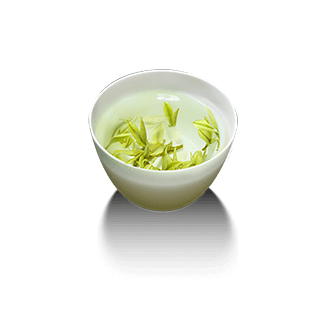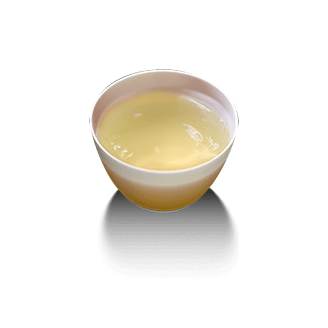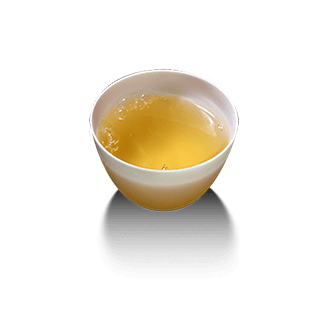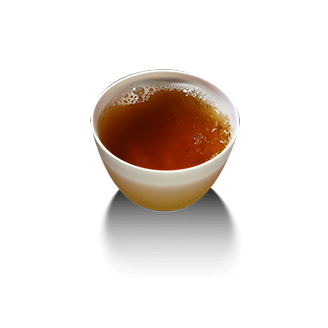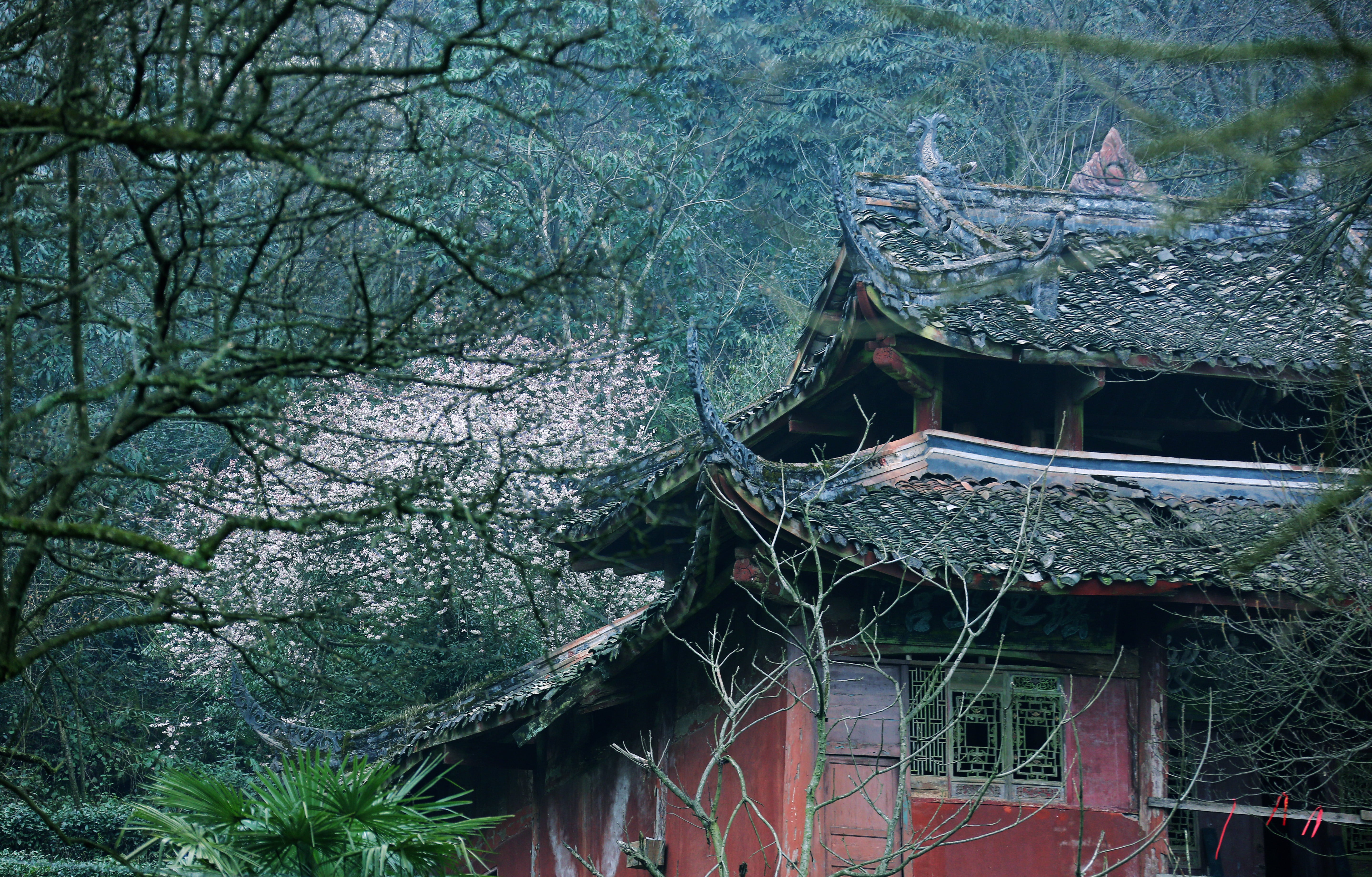
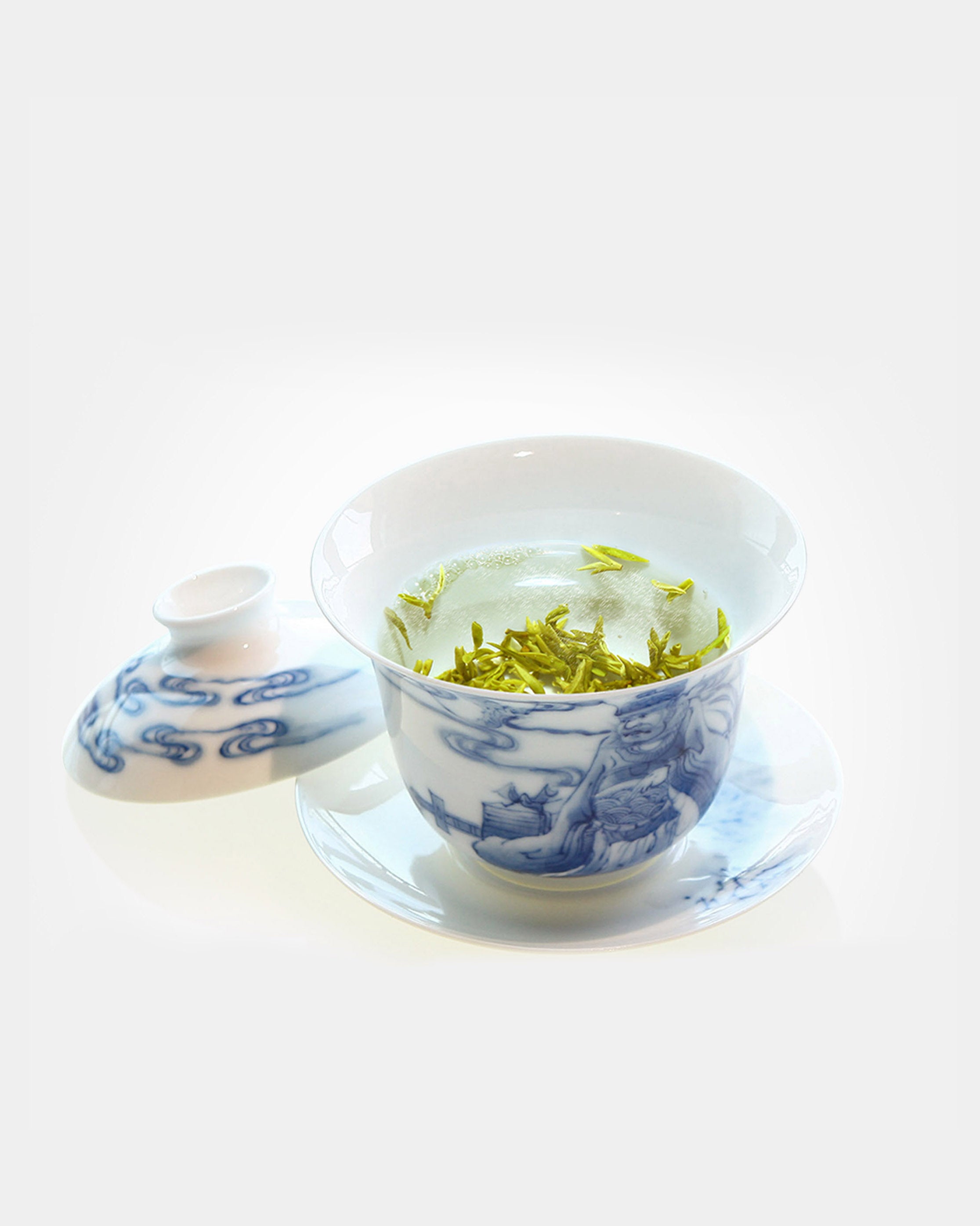

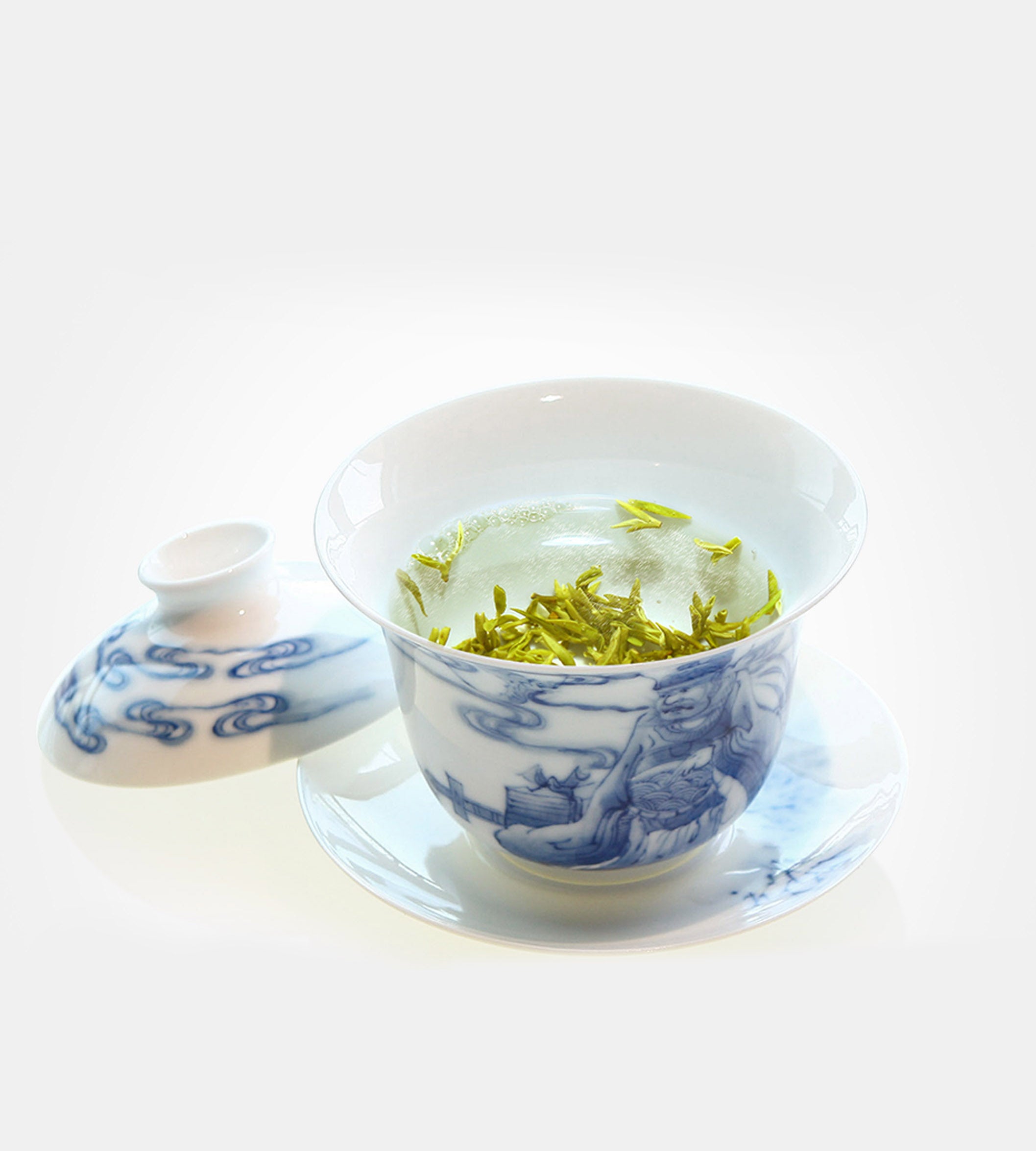
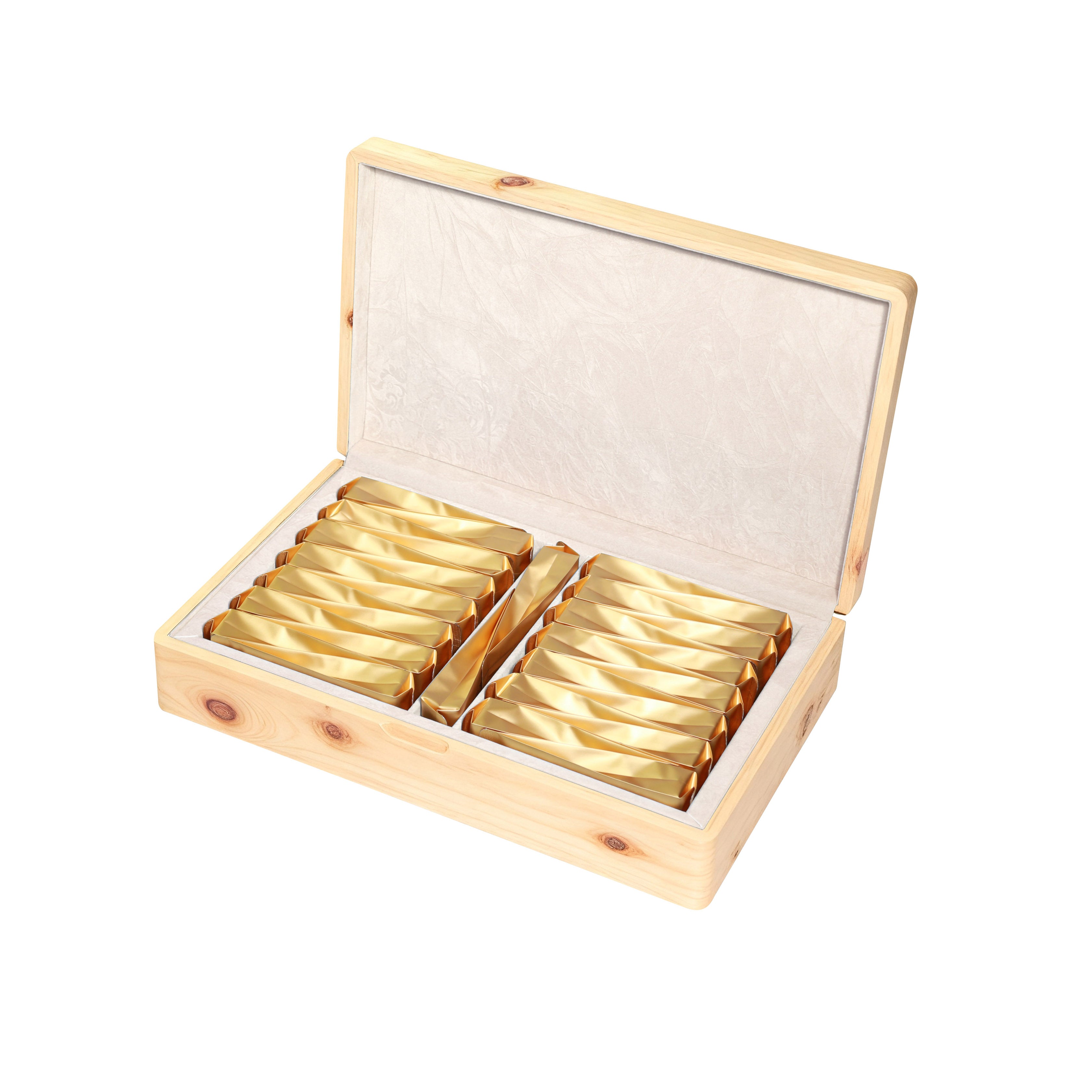

Mengding Nectar







Mengding Nectar
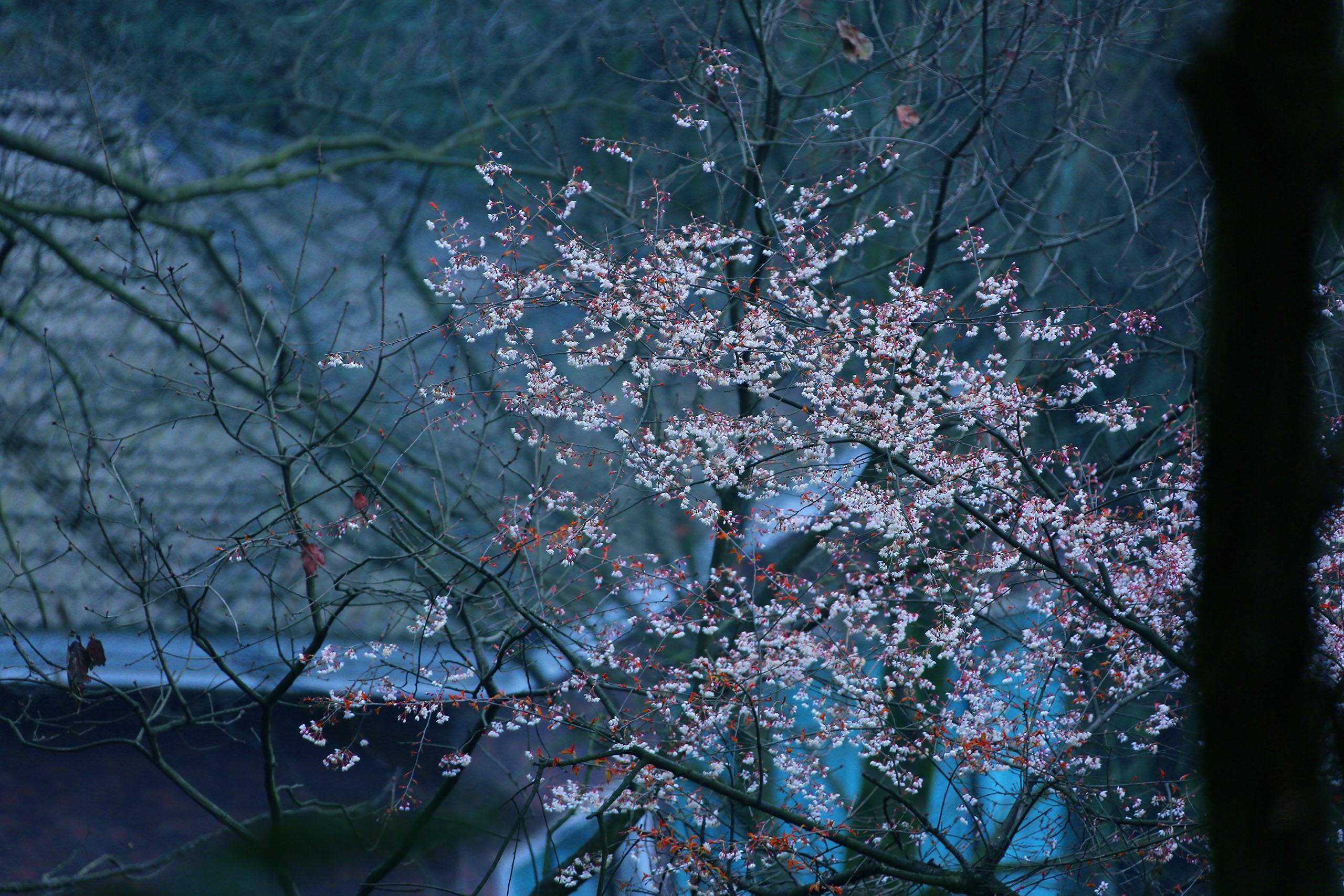
Looking down at Sichuan from a satellite, a gigantic "natural Buddha statue" comes into view beneath the firmament, with its head shining brightly—that is precisely the summit of Mengding Mountain. One of China’s oldest teas, "Mengding Nectar," was born atop this mist-shrouded Mengshan Mountain. Hailed as "celestial tea" since ancient times, Mengshan Mountain has thus earned the title of "Hometown of Immortal Tea."
"The Yangtze’s Pure Water, Mengding’s Peak Tea"—this line has been passed down through the ages. Since the Song Dynasty, the thousands-of-li-long Ancient Tea Horse Road originated here; the renowned tribute tea "Fengding Longtuan" (Phoenix-Crest Dragon Ball) also hails from Mengding Mountain. Legend has it that due to its extravagant production and enormous cost, which strained the national treasury, the emperor had no choice but to issue an edict to halt its production.
The "Intangible Cultural Heritage Journey Across Ten Thousand Miles" invites us to set foot on this magical land once again and step into the "Hometown of Immortal Tea" that has endured for thousands of years.

Mengding Nectar, known as "Immortal tea" for a full millennium, today I finally had the great fortune to taste its true flavor.
Wei Zhiwen was the first interviewee recommended to me by the Sichuan Intangible Cultural Heritage Center. The Wei family’s tea-making heritage dates back a century, and he is already the fourth-generation inheritor. His father once personally crafted tea as a tribute to Chairman Mao. Though advanced in years, Master Wei remains energetic and passionate, enthusiastically demonstrating the exquisite production techniques of both Mengding Nectar and Mengding Huangya for us.
It was on this occasion that the tea made by Wei Zhiwen made me suddenly comprehend the true meaning of the term "Immortal tea." The buds and leaves of Mengding Nectar are extremely tender, curled like snails and covered with fine silver fuzz. Upon sipping, it is sweet, fresh, fragrant and mellow—true to its name. The ancients did not deceive me; it really is sweet! Just one cup, and it became my lifelong favorite.

For thousands of years, Mengding tea has been revered as a magical substance that dispels illnesses and strengthens the body—hence the name "Immortal tea." Since the first year of Tianbao in the reign of Emperor Xuanzong of the Tang Dynasty, Mengding tea has been designated as an exclusive tribute for the emperor’s heaven-worshipping rituals. From the Tang to the Qing Dynasty, this tribute continued uninterrupted for over 1,200 years. To this day, Mengding Mountain still preserves the ruins of seven "Immortal tea" plants planted by Wu Lizhen during the Han Dynasty more than 2,000 years ago.

Legend has it that in ancient times, the Fish Immortal of the Qingyi River transformed into a village girl and fell in love with Wu Lizhen, a young man from Mengshan Mountain. The Fish Immortal gave him tea seeds as a token of their promise to marry the following year. When the tea seeds sprouted, the two tied the knot. However, their love between a immortal and a mortal violated the heavenly rules, and the Fish Immortal was summoned back to the Crystal Palace by the River God. At the moment of parting, she threw off the white veil from her shoulders, which turned into the mist lingering around the mountains, nourishing the Mengding tea trees forever.
Wu Lizhen spent his entire life planting tea. Later emperors, who were obsessed with Mengding Nectar, posthumously conferred upon him the title of "Chan Master Nectar Puhui Miaoji." Thus, Mengding tea has been passed down from generation to generation, presented as a tribute to the imperial court every dynasty, and has inspired countless poems and odes from literati throughout history.
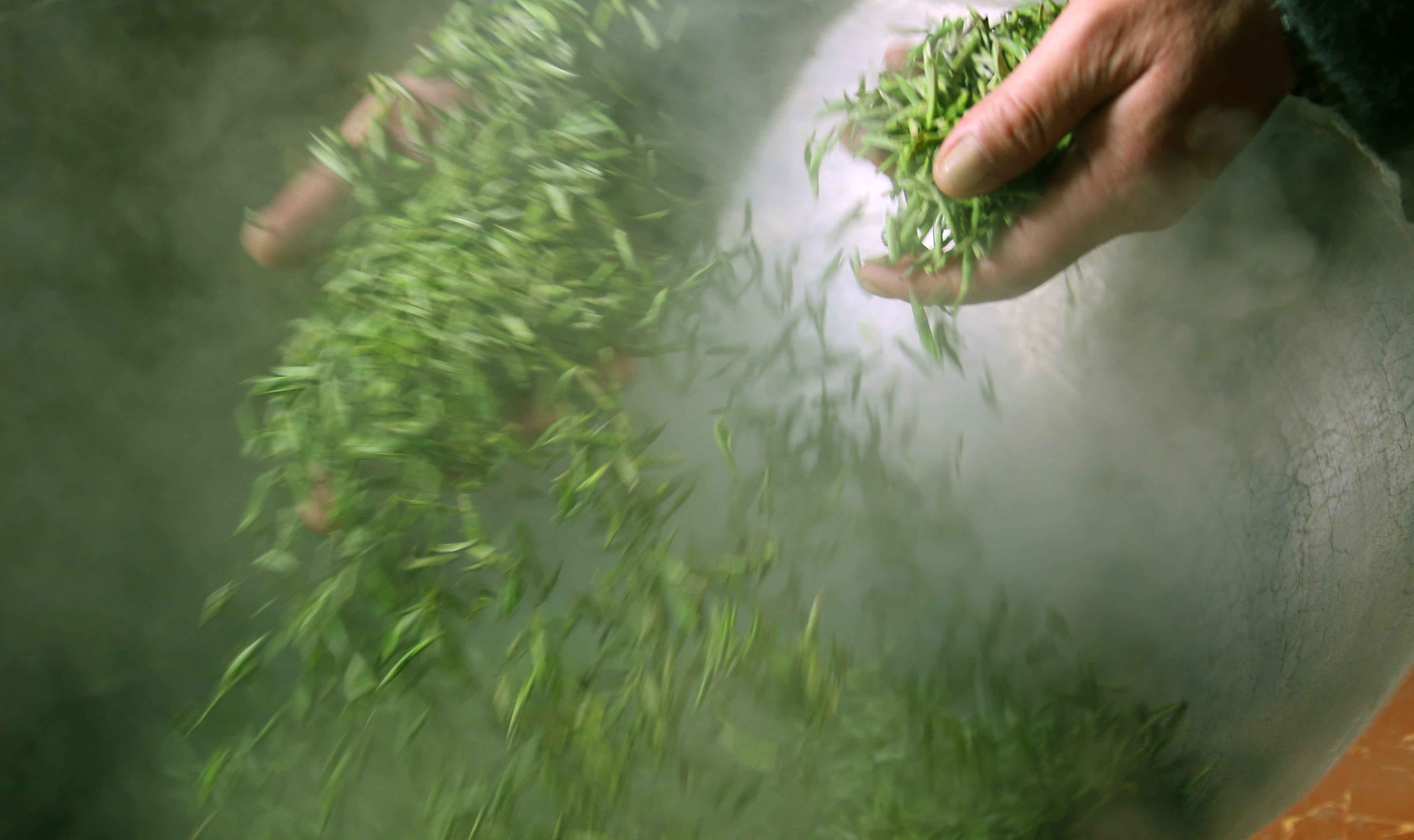
With the recommendation of relevant departments in Sichuan, we visited Zhang Yuehua, the fifth-generation inheritor of a tea-making family.
He has unique insights and rich experience in crafting Mengding Nectar. He took us into the tea garden, pointed to the tea trees, and said: "Every tea garden on Mengding Mountain has its own temperament. What we tea makers need to do is understand them and work in harmony with them."
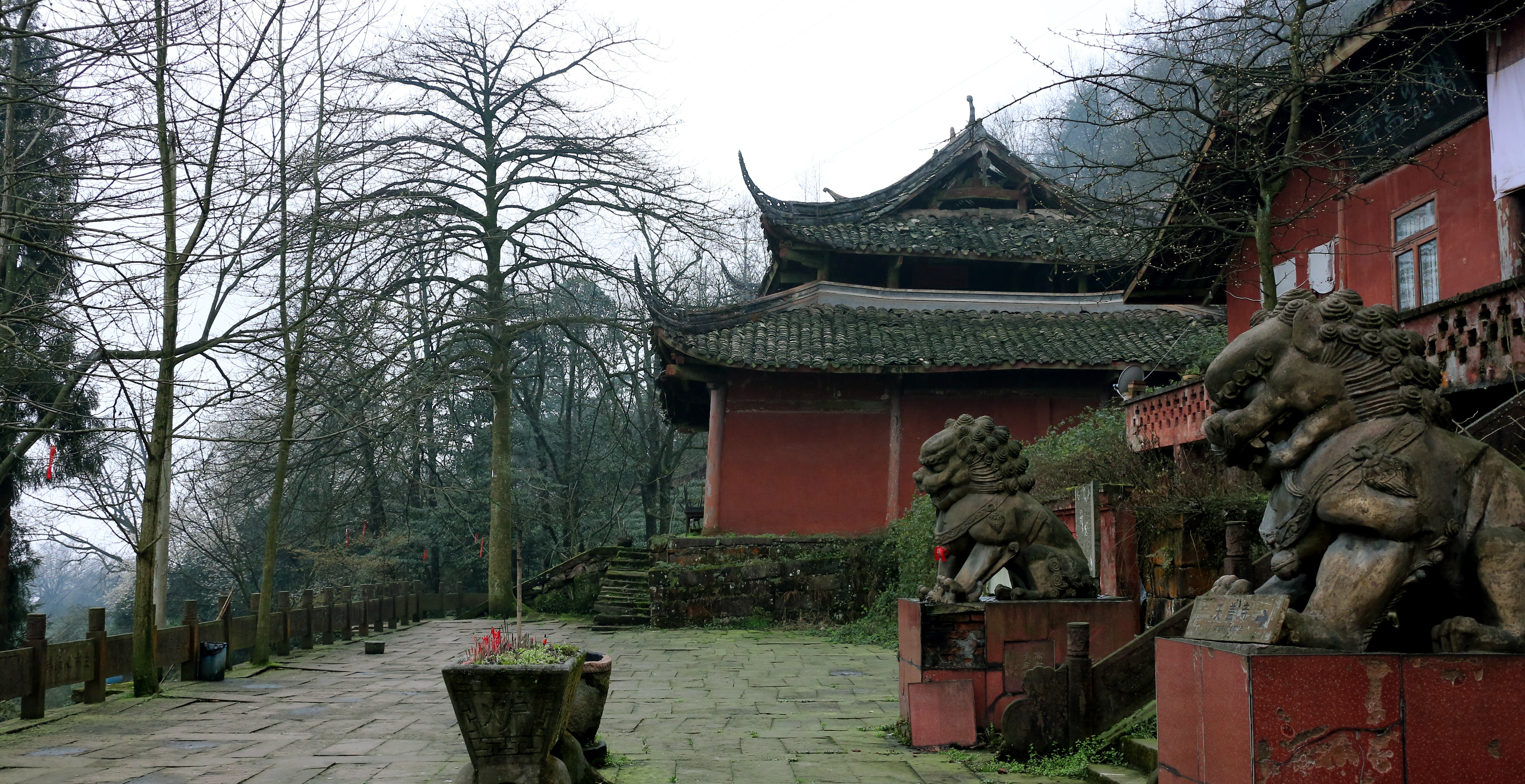
We sat around sipping the Mengding Nectar he crafted with his own hands. The tea aroma was fresh and uplifting, and it tasted sweet, mellow and refreshing on the palate. We couldn’t help exclaiming: “Truly excellent tea! It fully deserves the name ‘Immortal tea’! Compare it with others, and the difference is clear. Tea is the most honest thing in the world.” Indeed, this cup of Mengding Nectar—whether in terms of variety characteristics, ecological environment or production craftsmanship—can be called a model of Chinese green tea.
Wei Zhiwen and Zhang Yuehua are among the guardians of Mengshan tea’s more than 2,000-year-old tea culture. May more people get to taste this thousand-year-old “Immortal tea” and savor the warmth and perseverance in the craftsmanship of intangible cultural heritage inheritors.

Wei Zhiwen, ICH Inheritor of Mengshan Tea Production

Zhang Yuehua, ICH Inheritor of Mengshan Tea Production
The Immortal Tea Handed Down in Legends
for 2000 Years

Mengding Nectar
蒙顶甘露
Appreciation
Year: 2025
Grade: Top-tier Rare,First Flush single bud
Producer: Wei Zhiwen, ICH Inheritor of Mengshan Tea Production
Origin: Top of Mengding Mountain, Sichuan Province
Variety: Wild Population Cultivar
Craftsmanship: Fixing in a Red Wok, Three Roastings and Three Rollings, Traditional handmade. The traditional handmade craft of Mengding tea is an outstanding representative of Chinese green tea processing techniques.
Dry leaves appearance: Snail-like curls, densely cloaked in silver fuzz.
Tea Liquor color: Yellowish-Green,Translucent and Luminous
Aroma: Three-Layered Heavenly Fragrance, Rich and Multi-Dimensional
Taste: Taste: True to its name –Sweet, Fresh, Fragrant, Mellow
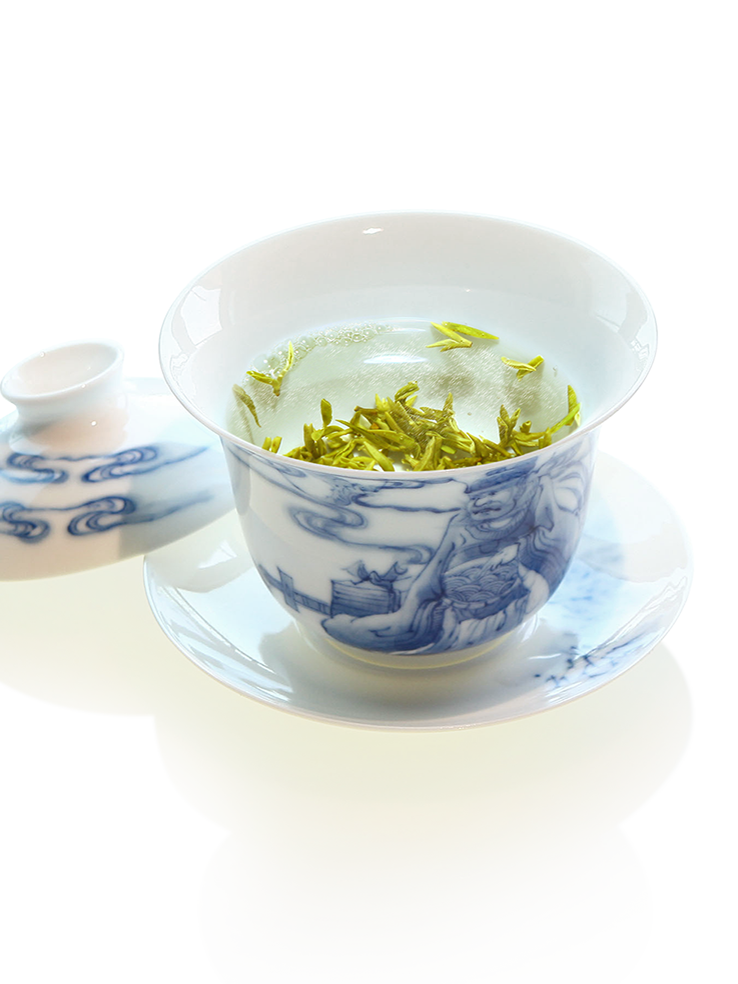
Liquor Hue:Yellowish-Green,Translucent and Luminous
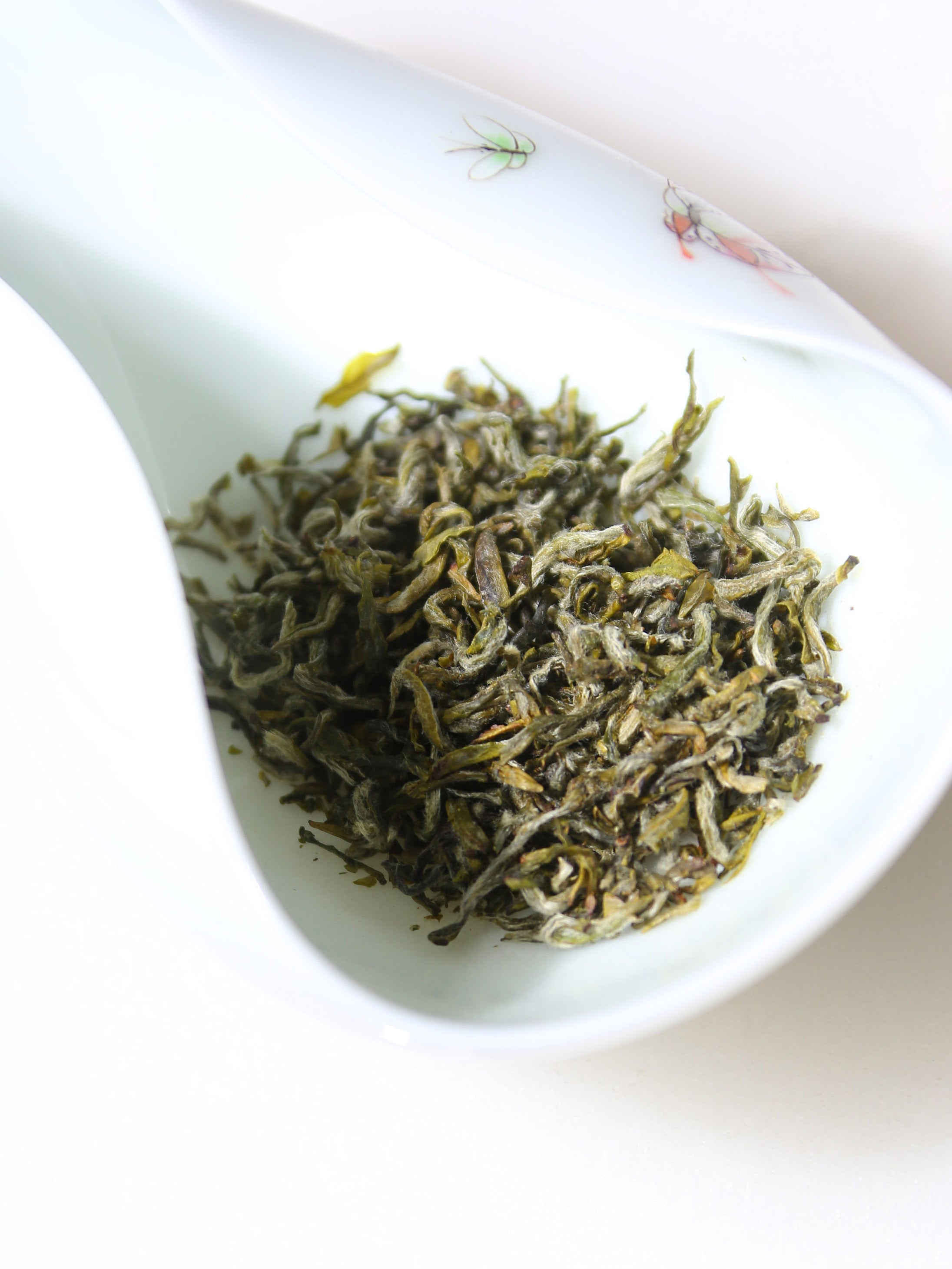
Dry Leaf Form: Plump, Compact Strips – Glossy and Downy
A fine tea's always like a fair lady

从来佳茗似佳人
A fine tea's always like a fair lady
Three Realms of Brewing in a Glass
Color Observation
The recommended tea amount is 3g to 5g,strength based on preference.
Pour 70℃ warm water gently,
watch buds and leaves unfurl and float in the glass,
tea liquor color fades from light green to clear,wet leaves stay fresh and vivid like new spring shoots.
Aroma Appreciation
Sniff the glass rim while it’s warm – the fresh, tender down fragrance lingers in the air, deeply refreshing your senses.
Taste Appreciation
Savor it when the temperature is palatable,
"Fine tea has always been like a graceful lady" – especially green tea.
— Take small sips, letting the fresh tea swirl on your tongue.
Mengding Nectar carries a sweet note in its fragrance, like being caressed by spring breeze.
Brewing Tips
1.Low-temperature brewing is key (70℃ is optimal)
Avoid Boiling water(100℃) for first brew causes 1st bitter, 2nd bland.
After the mouth is irritated, even if the subsequent water temperature is suitable, it will be difficult to perceive the tea flavor levels, and the true beauty will be missed.
Applicable Scope:All high-grade teas made from fresh, tender buds (e.g., Mengding Nectar, Biluochun, and high-grade black tea). The more delicate the buds, the lower the water temperature; slightly higher temperatures can be used for teas with coarser leaves.
2.Water quality is the easiest factor to overlook
Choose Qualified purified water; never use alkaline water.
(For commercially available mineral water brands, their water sources and quality indicators vary. So-called "high-quality mineral water and mountain spring water" may cause loss of functional components and inhibition of aroma in tea.)
Effect of Alkaline Water on Green Tea
Tea liquor color:
When pH>8.0, chlorophyll and flavonoids are easy to oxidize, and the bright green color turns to dark yellow and turbid.
Taste:
It inhibits the dissolution of tea polyphenols and caffeine, impairs the fresh and brisk taste of amino acids. Additionally, calcium and magnesium ions cause the tea liquor to become turbid, significantly reducing its "richness and smoothness" and resulting in a rough mouthfeel.
Aroma:
Accelerate the degradation of volatile substances in clear-scented teas (such as jasmine tea), floral aroma dispersal, easy to generate water boring flavor.
Especially the fragrant tea (such as jasmine tea, Anji White Tea) floral aroma is easy to disperse.
When the green snowflakes fly, the fragrance fills the cup; the spring breeze blows into the heart of the jade pot.
The green-tea snow flies when cup’s filled with fragrance nice;
The breeze of spring breathes in the heart of pot of jade.
The green-tea snow flies when cup’s filled with fragrance nice;
The breeze of spring breathes in the heart of pot of jade.
When the green snowflakes fly, the fragrance fills the cup; the spring breeze blows into the heart of the jade pot.
Package
"Forged Through Thousands of Hammers" Handcrafted Pure Tin Can
Height: 15 cm | Diameter: 11 cm | Net Weight: 250 g
Crafted by Sheng Yiyuan, ICH Inheritor of Yongkang Tin Carving.
The can body is shaped through thousands of manual hammer strikes, boasting a delicate and warm texture. Each hammer mark—varying in depth—stands as a unique imprint, a vivid testament to the warmth of handcraftsmanship and the profound meaning of intangible cultural heritage ingenuity.
The interior is finely polished using precision numerical control (NC) technology, ensuring a smooth and burr-free surface. The lid and mouth, crafted with high-precision techniques, achieve an airtight seal. This fusion of handcrafted warmth and modern technical precision preserves ancient charm while guaranteeing practicality.

Height: 15 cm | Diameter: 11 cm | Net Weight: 250 g

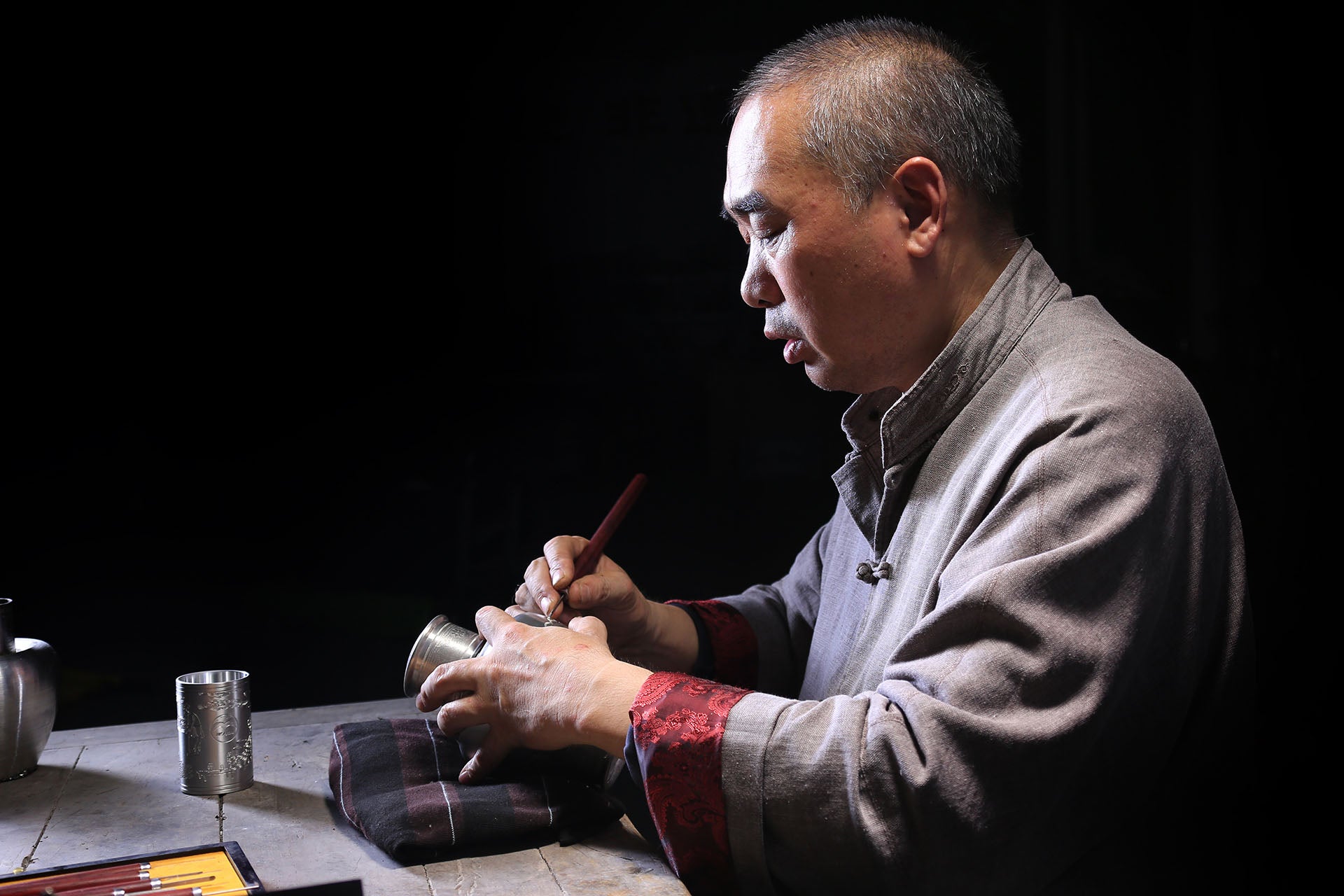
Sheng Yiyuan,ICH Inheritor of Yongkang Tin Carving

Bubble tea packaging effectively isolates tea from oxygen, light, and moisture, preserving the original aroma and nutrients of the tea for a longer period and extending its shelf life.
Green tea Storage

Freeze in airtight tea canisters at ≤-5℃
Do not mix with fresh food, keep away from light and moisture.
Note: Avoid opening the container frequently.
Each time you open the container, the tea comes into contact with air and moisture, accelerating the tea’s oxidation and spoilage.
Therefore, minimize the number of times you open the storage container.
Best before date: one year
Long-term Storage
Preparation: Clean the storage container
The container must be dry, odorless, and well-sealed . Pure tin cans, glass jars, metal cans, or food-grade aluminum foil bags are acceptable options.
New containers should be washed with hot water and thoroughly dried to avoid residual moisture or odors contaminating the tea.
Seal the mouth of the can or bag after filling the tea to minimize air entry.
Sealed Storage
Double-sealed packaging (such as aluminum foil bag + food-grade plastic bag) ensures absolute moisture protection and be sure to avoid light.
Store the sealed tea canister in the freezer (temperature ≤ -5℃), Store separately, do not mix with fresh food, and protect from odors.
When taking it out, the tea leaves should be moved from the freezer to the refrigerator to thaw before being placed at room temperature to avoid direct exposure to the air and the formation of condensation.
Small capacity short-term Storage
Store in a small metal or ceramic jar at room temperature, usually in the refrigerator, and drink within 1 month.
For gifting or collecting : High-grade green tea can be stored in a tin can + sealed bag + refrigeration to extend its shelf life.






